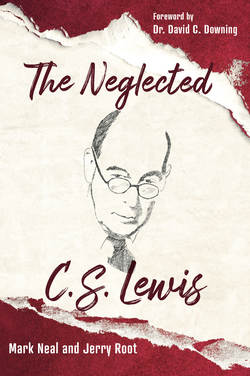Читать книгу The Neglected C. S. Lewis - Mark Neal - Страница 7
На сайте Литреса книга снята с продажи.
Foreword
ОглавлениеWhen I was pursuing my doctorate in English at UCLA, various professors of mine required me to read C. S. Lewis’s The Allegory of Love, The Discarded Image, A Preface to Paradise Lost, and An Experiment in Criticism. None of these professors were Christians, as far as I know, and none had any interest in Lewis the lay theologian or Lewis the fiction writer. They simply wanted me to be familiar with these classic works of literary history and criticism.
Outside of academia, though, the situation seems to be reversed. Readers who can quote word for word from Mere Christianity or Perelandra have often never read Lewis’s work as a professional literary historian; they may not even recognize the titles listed above. Mark Neal and Dr. Jerry Root have done students of Lewis a great service in the pages that follow, tracing the signature ideas in Lewis’s works of literary criticism and showing their relevance to Lewis’s more familiar books. Their thorough research and lucid prose will be welcome to readers who would like to understand Lewis more fully, but who feel daunted by books of such evident scholarly erudition.
Lewis was a man of many parts: a medieval and Renaissance historian who wrote humorous light verse; an influential critic who wrote letters to children; a compelling Christian apologist who wrote science fiction and fantasy. Yet one always senses in Lewis’s books “the one in the many.” His unique sensibility, his characteristic habits of thought and mind, developed early in life and remained remarkably consistent. So there is an intriguing interconnectedness in all his books, including his scholarship. As his lifelong friend Owen Barfield once observed, reading anything by Lewis reminds you of everything else he wrote.
Lewis’s mind was capacious, but it was not compartmentalized. When he produced literary scholarship, he did not cease to be a Christian. When he wrote science fiction or fantasy, he did not cease to be a medievalist. So reading any book by Lewis illuminates his other books. When you read The Discarded Image on the ancients’ view of the heavens, you understand better why Ransom has such unpleasant sensations when first descending toward Malacandra in Out of the Silent Planet. And when you come across Lewis’s discussion in OHEL of a minor sixteenth-century poet who described the hellish River Styx as a “puddle glum,” you can’t help but chuckle at the name when you meet the famous Marshwiggle in The Silver Chair.
Lewis’s literary criticism illuminates a great deal more than literature. In guiding readers through so many great books, Lewis ranges into cultural history, philosophy, theology, linguistics, and even sociology and psychology. He uses Mr. Badger in The Wind in the Willows to explain English social history, and he refers to the historical Puritans to illustrate what is wrong with so much contemporary criticism: “The Puritan conscience works on without the Puritan theology—like millstones grinding nothing; like digestive juices working on an empty stomach and producing ulcers.”
Lewis simply could not produce dull writing, even in his most scholarly tomes. His perceptivity, wit, and memorable turns of phrase appear as much in his academic writing as in his most popular works. This is not to say, of course, that Lewis’s professional works are just as accessible to lay readers as his more widely read books. Readers do indeed owe a debt of gratitude to Mark Neal and Dr. Jerry Root for elucidating these classic works by Lewis and for inviting readers not to neglect these books any longer.
—Dr. David C. Downing
Co-Director, Marion E. Wade Center
Wheaton, Illinois
